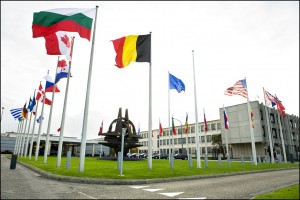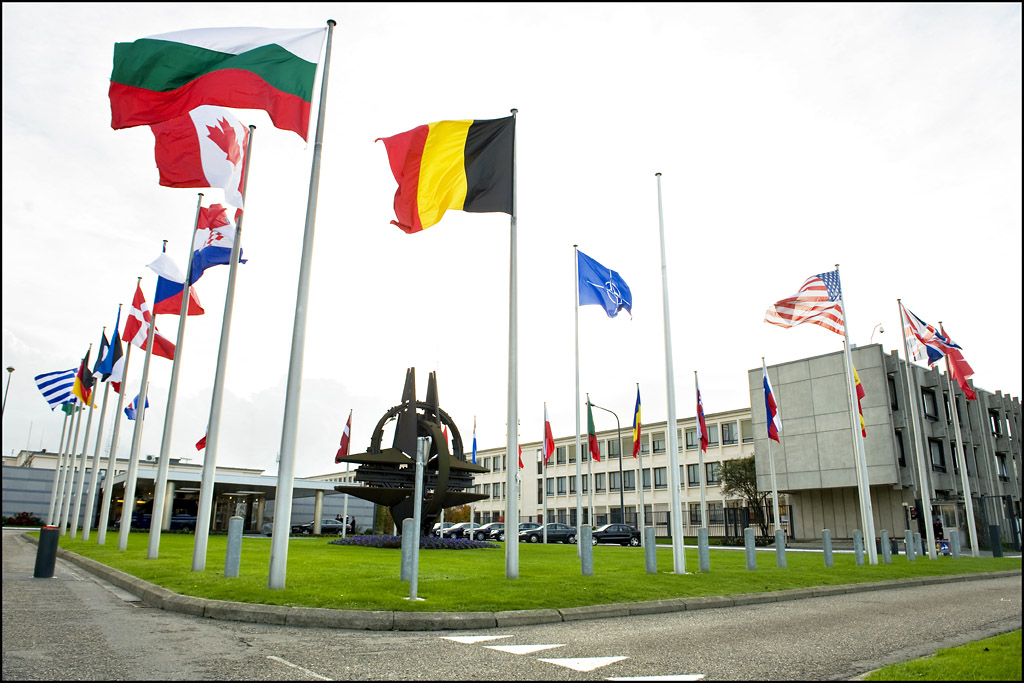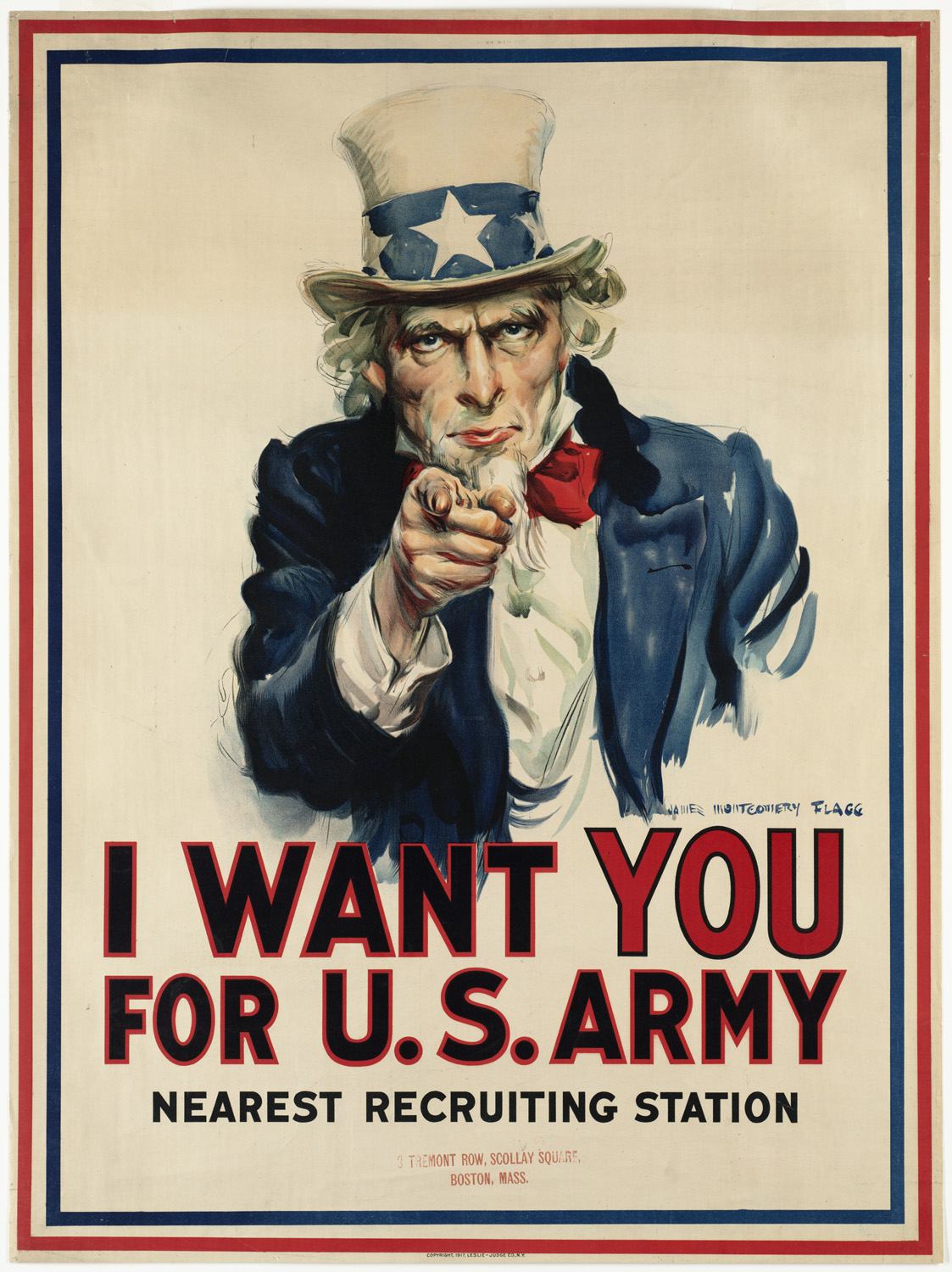
Originally founded as a deterrent to Soviet aggression in Europe, the North Atlantic Treaty Organization (NATO) is now the most successful and effective alliance the world has ever seen. However, since the collapse of the Soviet Union, the Alliance has often become the focus of attack by those that see it as arcane. To the skeptic, NATO is a relic of the Cold War that should have gone away along with the Soviet Union. As time has progressed, the usefulness of NATO, as both a military and a political alliance, has provided means for a collective response to crises that not only have had the potential to destabilize Europe but other strategically important regions. The history of NATO is one of cooperation that transcends borders to achieve a common sense of collective security that promotes peace and stability. Future history will show that sense of cooperation was amplified by agreements between the trans-Atlantic alliance. In the 21st century, NATO will continue to be the world’s preeminent global organization and is more relevant now than at any time in its history.
After the Soviet collapse there were a number of reasons why NATO did not dissolve. Richard Betts of The National Interest articulates one of the most logical reasons, “[NATO] had become a genuine institution, complete with transnational, integrated command structures, a permanent bureaucracy, buildings, regular meetings and ceremonies, its own logo, website and so on”. Essentially, creating a bureaucratic institution is much easier than taking it down. It displaces employees, infrastructure, and relationships that have been built up over the years. With that said, NATO was forced to find legitimacy for itself or face the wrath of national treasury auditors.
NATO found its legitimacy during the Balkans Crisis in the 1990’s when it conducted the Humanitarian Intervention at the behest of the United States and the United Kingdom. It began with mere airstrikes, and quickly escalated when Slobodan Milosevic did not cease ethnic cleansing of the region. Under the auspices of UNSC Res. 1244, NATO, as well as other partner nations, deployed peacekeepers. Now, 13 years after NATO’s first incursion, 5,576 troops remain stationed in Kosovo at the time of print.
One of NATO’s strengths is its Collective Defense Provision, delineated in Article 5 of the North Atlantic Treaty. If any member nation is attacked, other member states within NATO have the responsibility to come to the defensive of the anguished nation. This clause was enacted for the first time by the United States after 9/11. The United Nations Security Council passed Resolution 1386 creating the International Security Assistance Force (ISAF) with language “Authorizing … member states participating in the ISAF to take all necessary measures to fulfill its mandate.” The founding of ISAF gave NATO nearly unlimited authority to complete its objectives in Afghanistan. The war that ensued against insurgent groups in Afghanistan is considered to be NATO’s first ‘out of area’ operation and to date 129,469 troops from 50 Nations are supporting America’s effort (Allen, 2012).
NATO’s has a nationbuilder role in Afghanistan and Kosovo. While this may be the right role to adopt, it costs a lot in terms of blood, money, and time – three items NATO’s democratically elected leaders do not typically have in overabundance. That said, the NATO Alliance is committed to completing the missions that they undertake, as well as implicated missions vital to global security.
In 2011, the revolutionary fervor sparked by the suicide of Tunisian street vendor Mohamed Bouazizi caused an outlash against the region’s totalitarian leaders that spread from Tunisia to nearly every corner of the Arab world. While the world today is still waiting for some final outcomes to emerge from the revolutions – including the civil war in Syria – the early days of the Arab Spring brought about one of the greatest acts of cooperation by supranational organizations since their inception after the WWII. With Libya as a member of the Arab League and Mummar Gadhafi’s pledge to, “Execute anyone who played games with the country’s unity,” it was the responsibility of the Arab League to ask for assistance from the United Nations Security Council.
The Security Council granted the Arab League’s wish to establish a no-fly zone over Libya, with Gadafi regime member support. Since the UN has no standing military to enforce its mandates, it turns to NATO to accomplish this task. NATO quickly convened and voted unanimously to establish a no-fly zone and on March 22, 2011 – Operation Unified Protector (OUP) was established. To accomplish its goals and keep pilots safe, OUP required airstrikes target Gadhafi’s forces, which had the potential to harm NATO troops. This supported propelled the rebels’ movement to unseat Gadafi. Two-hundred and twenty-two days later, NATO officially concluded its mission in Libya on Halloween Night 2011.
OUP is the only NATO mission ever to be completed and represents an example of how international organizations can effectively cooperate in the future. However, some believe NATO’s actions extend beyond their mandate, and may even be illegal. Russia and China believe NATO’s free reign, endorsed by the Security Council, to ensure the no-fly zone safe implementation in Libya abuses this great authority and betrays their trust. This is one of the reasons for the deadlock preventing international cooperation regarding Syria. Yet with that said, OUP symbolizes how International Organizations can effectively cooperate and act as a blueprint on how to address global security imperatives. While not perfect, there is no precedent for how to correctly conduct a humanitarian intervention, therefore, making it a process of trial and error as demonstrated by NATO’s efforts in Kosovo, Afghanistan, and Libya.
Moving forward NATO faces many challenges. The 2008 global financial collapse is causing many nations, including the US, to take austerity measures that will inevitably cut defense spending. Traditionally, the Europeans spend less on defense than Americans, and so making any cuts to these minimal spending levels is detrimental. On average, European members of NATO only spends about 1.6% (and declining) of their GDP on defense while the US spends 4.8%[8]. Living under the US’s huge military umbrella has afforded European countries to live securely and comfortably with minimal cost, thanks to statutes such as Article 5.
To address these issues, NATO Secretary General Anders Fogh Rasmussen proposed an audacious new policy that will affect all citizens living within the alliance. Smart Defense calls for the streamlining of forces within the alliance to create a leaner, more efficient force. Smart Defense would use each nation’s military comparative advantage as part of a greater collective military force.
While this proposed plan has many critics, it is the best way forward to address growing financial struggles many nations face and maintain a high level of collective security that individuals living within the alliance demand. Collective defense prevents war and has preserved peace in Europe for over 50 years. Alliance members have had their differences, and the NATO alliance forum provides an outlet for member states to address these grievances in a peaceful and diplomatic way. The massive coordination effort that will be necessary to fully achieve Rasmussen’s dream will undoubtedly strengthen the level of cooperation between member states and the efficacy of the organization.
At this summer’s NATO Summit in Chicago, measures were taken to start the long process of creating a unified fighting force. One of the Summit’s agreements, Deterrence and Defense Posture Review, Article 1, states that participating nations, “Must… provide adequate resources for their military forces so that they will have the required characteristics, notwithstanding current and probably continuing financial difficulties”. Although many other variables will need to be integrated to realize Rasmussen’s goal, meaningful collaboration is a meticulous process.
During the conference, Georgian President Shakisivili said, “Organizations like NATO are the way of the future. And those who think it is a relic of the past, are a relic of the past”. Geo-politics and an ever-evolving world require NATO to redefine itself – out of necessity. NATO’s reinvention is the logical step forward to face the future’s conflicts. Stephen Flynn, a professor of Political Science at Northeastern University once said, “to be effective at fighting wars, the lines of responsibility and command must be streamlined and clear”. Smart Defense meets that directive by combining the best aspects of multiple fighting units and discarding those that are redundant. It will make NATO more effective at confronting the next, unpredictable challenges.
It is very unlikely that the world will see the symmetrical warfare fought in WWII ever again. As the world becomes more interdependent due to globalization and instant communications, conflict will be rarer, shorter, more focused encounters, conducted in a multilateral arena, and meet consensus. In many aspects, NATO has been doing this for over fifty years. Member states need to realize that they have always been on the course towards Smart Defense and that collective strength and capabilities integration will ensure greater cooperation and sustained peacetimes.
Michael A. Trudeau
Political Science 2013
Betts, Richard K. “The Three Faces of NATO.” The National Interest . April 10 , 2009. nationalinterest.org/article/the-three-faces-nato-3031 (accessed July 5, 2012).
North Atlantic Treaty Organization. “NATO’s Role in Kosovo.” NATO. Major General Erhard Drews. June 25, 2012. NATO.int/kfor/structur/nations/placemap/kfor_placemat.pdf (accessed July 6, 2012).
United Nations Security Council . “Resolution 1368 (2001) .” S/RES/1368 (2001) . New York : United Nation, December 20, 2001.
Allen, n. John. “International Security Assistance Force .” ISAF: Key Facts and Figures . Kabul: NATO , May 10, 2012.
East, BBC News – Middle. Libya Protests: Defiant Gaddafi Refuses to Quit . February 22, 2011. bbc.co.uk/News/world-middle-east-12544624 (accessed July 8, 2012).
East, BBC News – Middle. Libya Protests: Defiant Gaddafi Refuses to Quit . February 22, 2011. bbc.co.uk/News/world-middle-east-12544624 (accessed July 8, 2012).
NATO. NATO and Libya. March 28, 2012. NATO.int/cps/en/natolive/topics_71652.htm (accessed July 8, 2012).
Pires, Maria Leonor. Europe and United States Defense Expendature. Power Point , Brussles : European Defense Agency , 2010.
Summit, Chicago. Deterrence and Defence Posture Review. May 20, 2012. nato.int/cps/en/SIC-7B428A4B-9F8FAA1A/natolive/oficial_texts_87597.htm?mode=pressrelease (accessed Aug 20, 2012).
Council, Atlantic. “2012 Young Atlanticist Summit – Conversation with Georgian President Mikheil Saakashvili .” Chicago: YouTube, May 21, 2012.
Flynn, Stephen. The Edge of Disaster – Rebuilding a Resiliant Nation . p.120 New York, NY: Random House , 2007.



